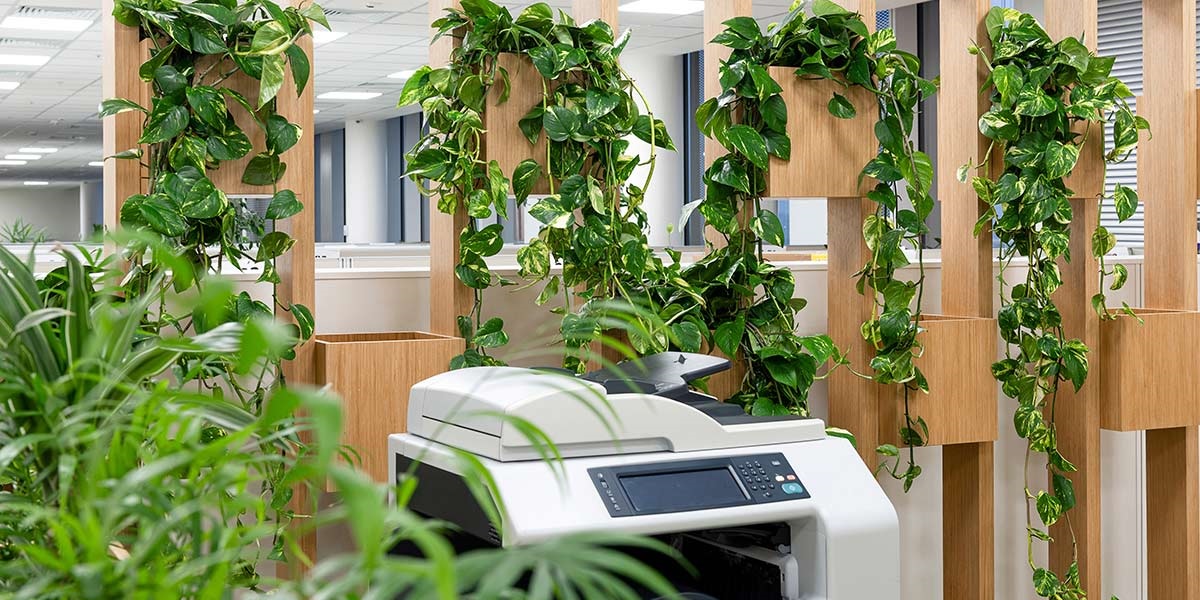Could an office shared be a problem solved?
In our post-pandemic, cost-of-living-crisis world, many charities are facing a property conundrum: how to optimise their office space usage while reducing overheads? We talk to Rui Domingues, director of finance and operations at the Charity Finance Group, and Dan Bishop, head of operations and services at the Association of Chairs, about their mutually beneficial solution.

Article last updated 16 October 2025.
The office space challenge
Recent changes to the ways in which people work significantly reduced the Charity Finance Group’s (CFG) requirements at its office in Angel, London. “Lots of our team moved out of London during the pandemic, and we’re now a remote-first organisation. With only three of our 19-strong workforce using the office one to three days a week on average, we needed to find ways to minimise our costs and reduce the liability,” Rui of CFG explains.
Although CFG couldn’t break its lease early, its registered social landlord was open to the charity subletting some of its desk space. “Rather than undertaking a lengthy and expensive lease re-negotiation, our landlord agreed to a side letter allowing us to let desk space to up to two other charities,” says Rui.
A happy coincidence
Around the same time, the Association of Chairs (AoC) team were looking for somewhere new to base themselves following changes at their existing co-working space in Farringdon.
CFG advertised across its various networks and with its members, while AoC’s chief executive reached out to her peers within other third sector infrastructure organisations. This led to a conversation between the two charities CEOs about their respective office challenges – and, as the saying goes, ‘the rest is history’.
“CFG’s ‘desk letting’ solution was perfect for our needs,” explains AoC’s Dan. “We really liked the flexibility – we could rent just a couple of desks, but have the use of facilities attached to a fully working office, including meeting rooms and storage space. CFG needed help covering some of its costs and wanted people in the office more often. The budget worked for us and the space worked even better than our previous co-working arrangement. It was a win-win solution.”
Ironing out the details
Aside from the legal element – AoC has a subletting agreement with CFG under the side letter – the two charities have developed an informal ‘co-habiting’ relationship, based on trust and good communication.
Rui says: “Dan and I established a very good relationship early on. Dan’s experience managing the use of a co-working space was invaluable, as he knew what to expect and could highlight possible challenges and pain points. We just took a mature outlook and agreed that we didn’t need to define every minor detail in the contract.”
Dan adds: “We’ve never let little things become big issues. Good and consistent communication underpins our working relationship – and it helps that we get on well.”
Both highlight how the arrangement has offered far more than just a practical and financial solution – it’s resulted in the two membership organisations collaborating in new ways and improving their office culture. “We’ve been able to share learnings, challenges, and best practice,” explains Dan.
It’s also often the case that each charity only has a few members of staff in the office. Whereas before they would have been working alone, now they have company, so it’s a better, and more enjoyable working environment.
Working together to move apart
While the shared office arrangement has worked really well, the space is still too big – and expensive – for their respective needs. As such, CFG has decided to make use of the break clause in its lease, so both charities will be leaving the existing office.
To establish its office requirements and next steps, CFG is going through a three-phase internal process, which includes conducting a staff survey. “We’re investigating various options, including asking our corporate partners and charity members if they have space for us to use or rent, and seeing what is available on the market,” says Rui.
One option is for CFG to use a co-working space specifically designed for charities. “As an umbrella organisation, being close to 30 other charities presents a great opportunity for collaboration.”
Rui explains that they heard about this space through another charity based in their current office building, which had recently gone through a similar property evaluation exercise. “They were happy to share their research and findings with us, which has been incredibly helpful – and saved us lots of time and money.”
As AoC has similar needs, Rui is also sharing CFG’s ideas and findings with Dan. “This way, neither charity has to waste precious resources and duplicate efforts.”
Dan adds: “Rui and the CFG team have been incredibly generous sharing their learning and research. I'm so pleased that we can help each other and maximise resource. Our co-working arrangement has underpinned the importance to us of working collaboratively with others in the sector, something which has AoC has always valued. I've no doubt that CFG and AoC will continue to work together even if we don't share an office.”
Sharing lessons learned
Dan’s advice to other charities is “to be creative about your offices – whether you have too much space or need more. The world of work is very different to a few years ago. If you enter a similar shared office arrangement, make sure both parties are very clear from the outset about what’s important to them and what they need from the space. Communication is key, as is flexibility –make sure you iron out any issues early.”
Rui concludes: “The charity sector is known for being collaborative and supportive, so there are lots of ways charities can leverage their connections to maximise their office space. It might take some time and effort, but it could lead to new opportunities and forge closer relationships with your network and partners.”
